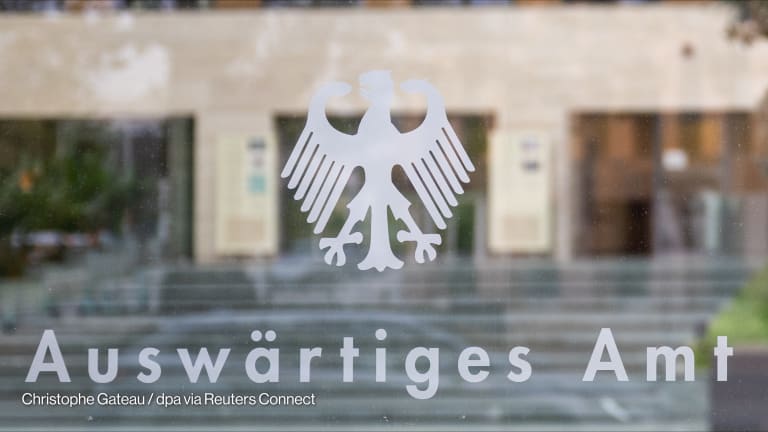
Australian aid agencies will learn next week exactly where the ax will fall when the Australian government announces the biggest cuts to overseas development assistance in the nation’s history.
The situation is grim. With a 20 percent cut to aid spending expected for the next financial year, and fears that it could be even more, many agencies, including ChildFund Australia, have started scaling back country programs. Clarification on how the cuts will impact the NGO sector won’t be clear until the federal budget is announced May 12.
At a time when regional peace and prosperity are key foreign policy priorities for the Australian government, the decision to cut funding for programs that are improving the lives of the most vulnerable children and families appears contradictory.
We know from experience that investment in effective international aid programs, particularly those with a grass-roots approach and with strong local partnerships, can be enormously beneficial — not only for families and communities but for the entire country and region. Countries cannot move ahead unless children are healthy, educated and have opportunities to meaningfully participate in their families and societies.
We also know children don’t always benefit immediately or directly from general economic growth — the cornerstone of the Australian government’s “new aid paradigm.” It is possible for a country to have strong growth in gross domestic product and yet have vulnerable children miss out or be excluded from the benefits. Papua New Guinea is an example. The country is one of the fastest-growing economies worldwide, but is ranked 157th out of 187 countries in terms of its human development. Well-targeted aid and development projects ensure children aren’t left behind.
Despite this, more than $11 billion is set to be wiped from the aid program over the next four years, bringing Australian aid to its lowest level since records began. Notably, there has been little public outcry in response.
Just a decade ago, Australian aid had strong support from both sides of politics. This began to falter in 2012, when both Labor and the Coalition walked away from their bipartisan commitment to increase Australian aid to 0.5 percent of gross national income by 2015. Since that time, the aid budget has suffered consecutive cuts under the guise of “aid deferral” or a “freeze” on aid. The parameters of the aid program have also become confused, with millions of dollars diverted to domestic asylum seeker costs and, more recently, to Australia’s contribution to the Green Climate Fund.
Public support for Australian aid was also much higher during this period. Studies tracking public perceptions of aid show a disheartening decline in support in recent years. Research conducted by ChildFund Australia, for example, found the number of Australians who think aid has been effective in improving the overall standard of living in developing countries fell from 76 percent in 2007 to 57 percent in 2012.
Undermining public and political support for aid is the widely held belief that Australia has fallen on tough economic times. The government’s “budget emergency” rhetoric has been very influential — leaving many Australians with the view that we have no choice but to cut aid if we want to repair the budget. Persistent messaging that “we shouldn’t borrow money just to send it overseas” has also seeped into public discourse, despite the fact Australia’s debt level is relatively low and aid spending is no more related to government borrowing than any other program.
It is critical that we rebuild both political and public support for Australian aid if we are to ensure the care and protection of children in our region. Australia is a wealthy country surrounded by developing nations and fragile states. The Asia-Pacific region is home to the greatest number of children living in poverty, yet it is also evident that the distribution of poverty and inequality is shifting.
Nationally, regionally and globally, conditions affecting children are changing fast. New risks are emerging that are already having a massive impact — rising inequality, extreme weather events, increased mobility and displacement, loss of traditional culture, and rapid economic and social change. It is more important than ever that children be equipped to deal with this fast-changing world, particularly those who already experience vulnerability or exclusion.
We have seen incredible progress in many countries over the past generation, but there is more work to do. The sustainable development goals, to be announced in September, will set a much wider agenda for governments and organizations committed to human development. For this to be operationalized, government spending on aid cannot be viewed as an optional extra.
Now is the time to deliver a more contemporary story about aid. We need to transform the way we, the aid community, talk about ourselves and our work. A new approach is needed that doesn’t rely on the variability of the economic and political climate, but that positions aid as a core of the Australian national identity.
Australians have a strong sense of fairness, which can be harnessed in telling this story. We’re already seeing this used to great effect in the new Campaign for Australian Aid, which has mobilized more than 50 aid organizations and registered support from over 40,000 members of the Australian public.
We must also help Australians understand that aid is one part of the bigger picture in reducing poverty and advancing opportunities in our region; not the only solution and not working in isolation, but a critical part of the broader effort.
If we do this right, support for Australia’s aid program will strengthen because people feel proud of the work being done and the vital role it plays in building a fair, peaceful and prosperous global community.
Join the Devex community and access more in-depth analysis, breaking news and business advice — and a host of other services — on international development, humanitarian aid and global health.








